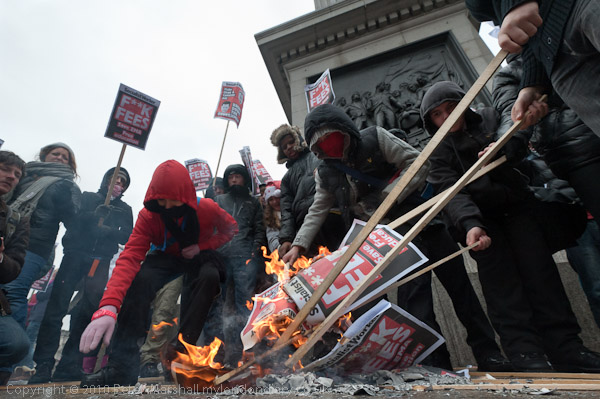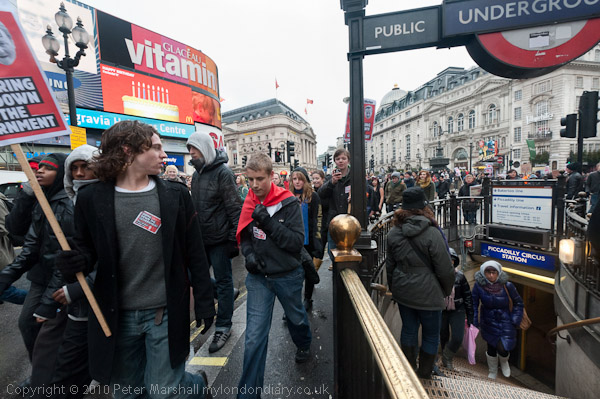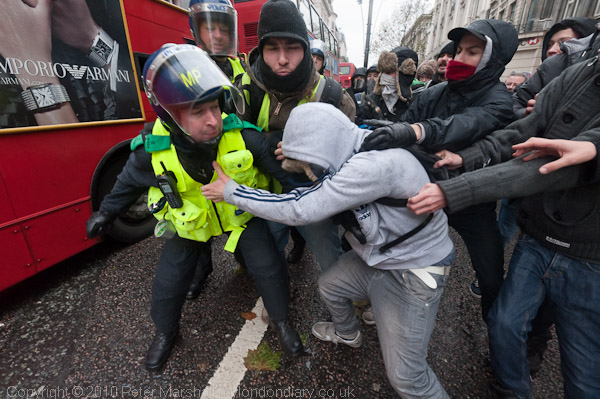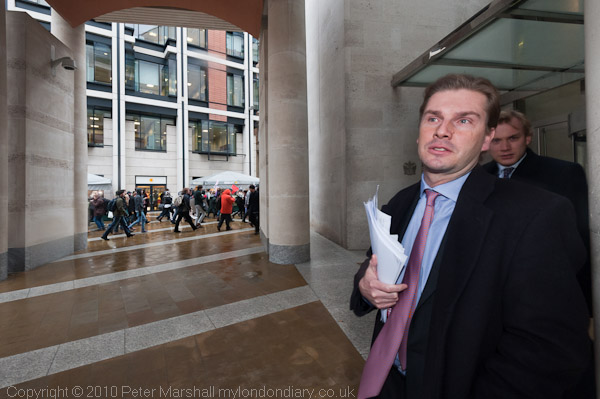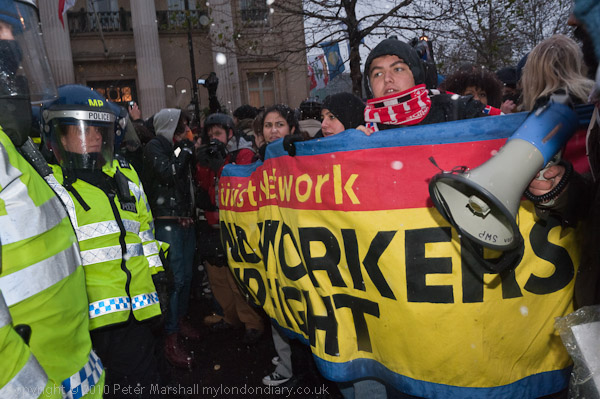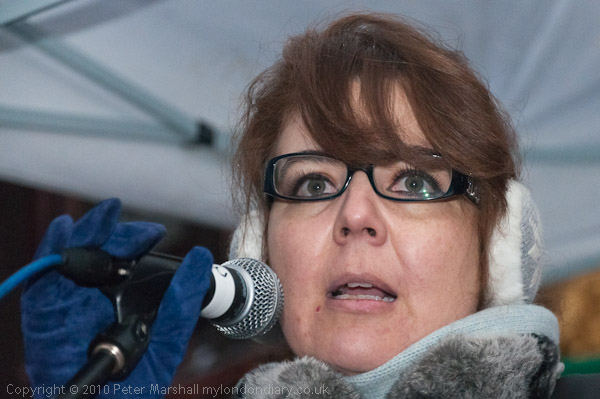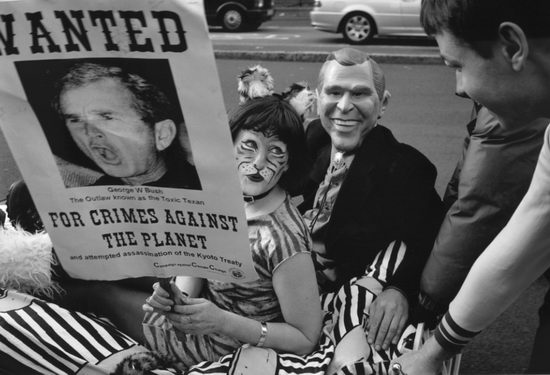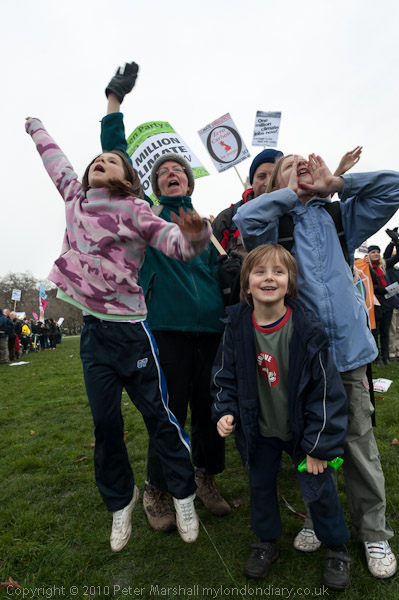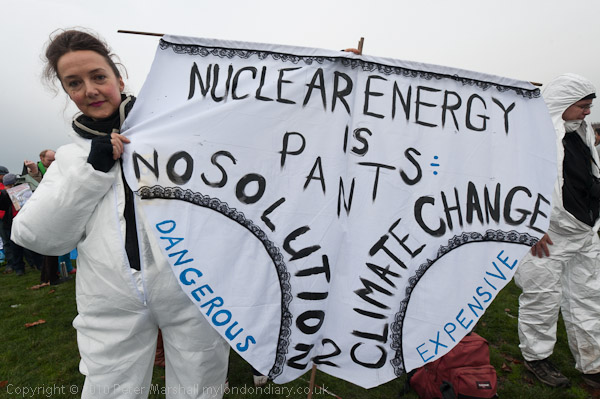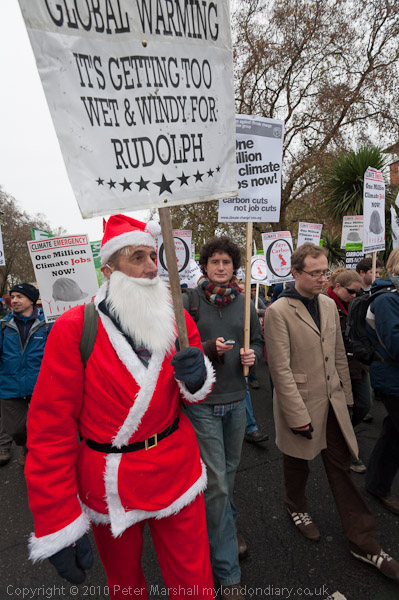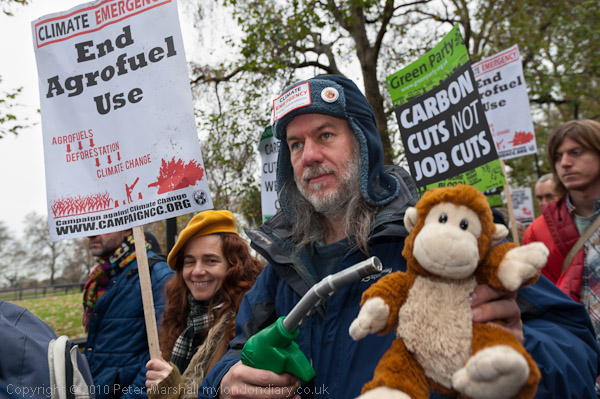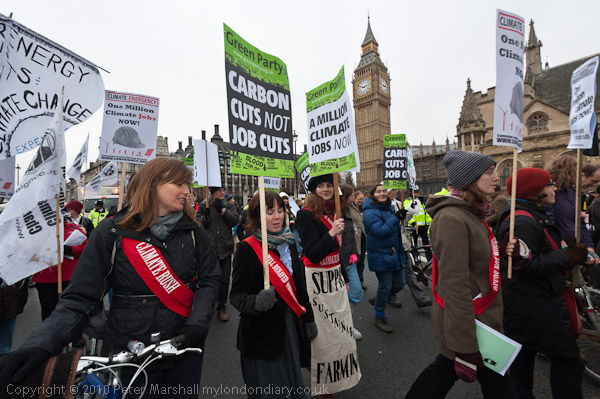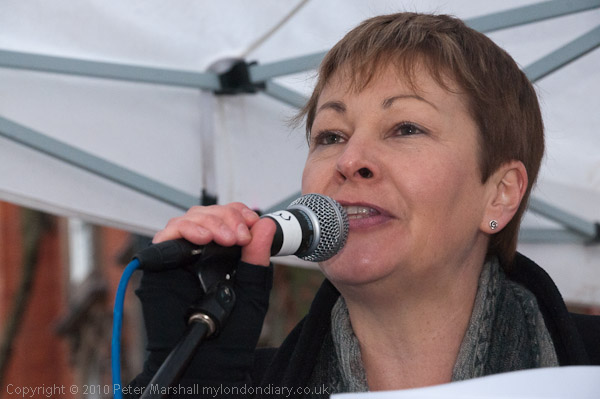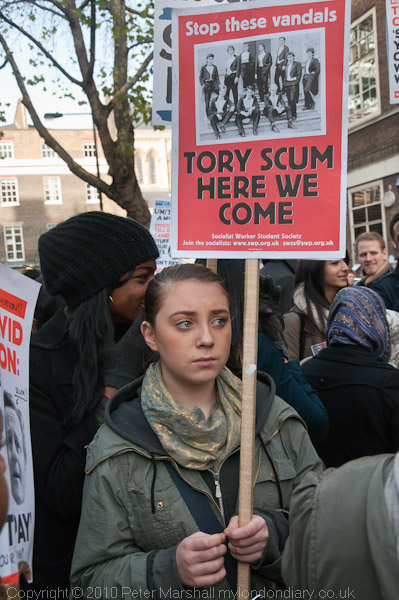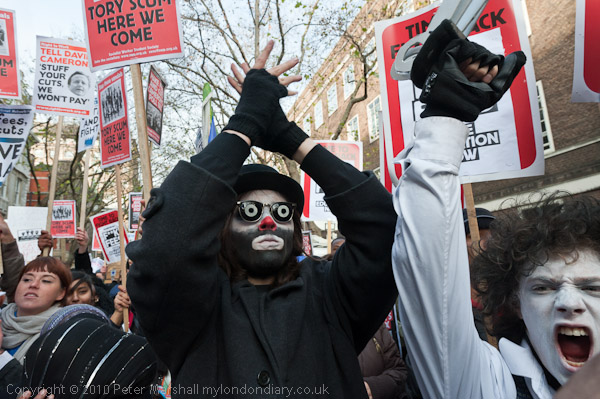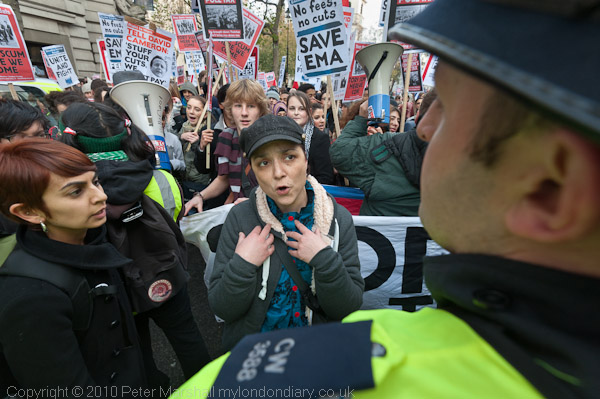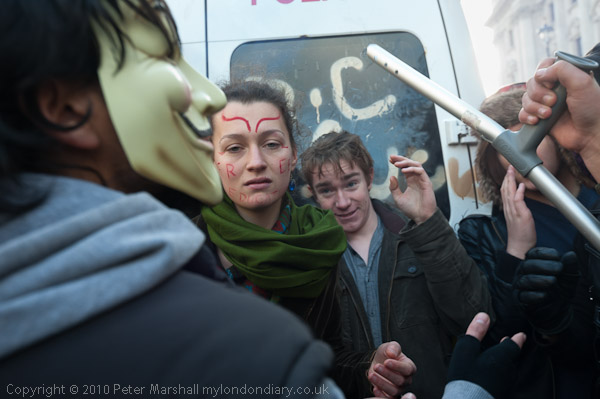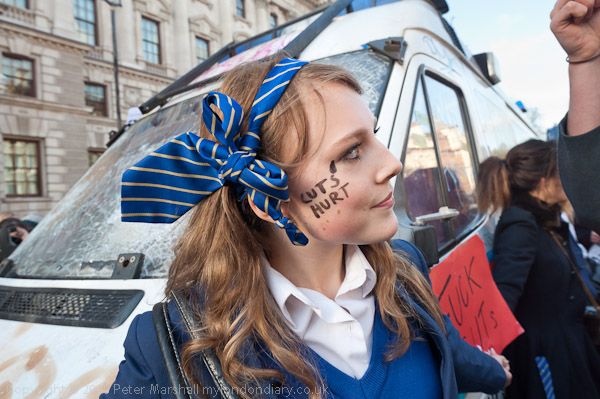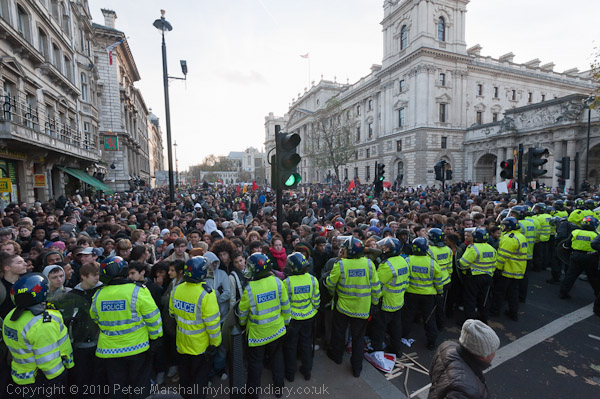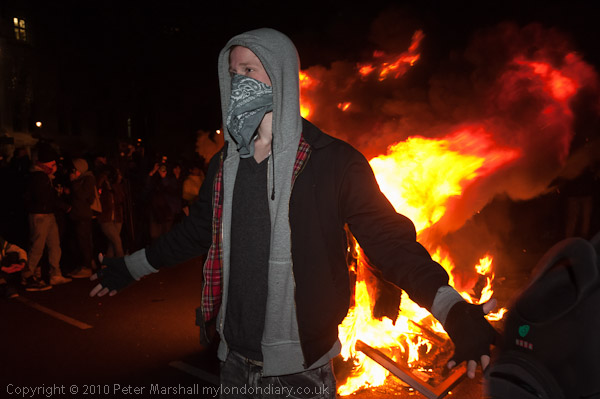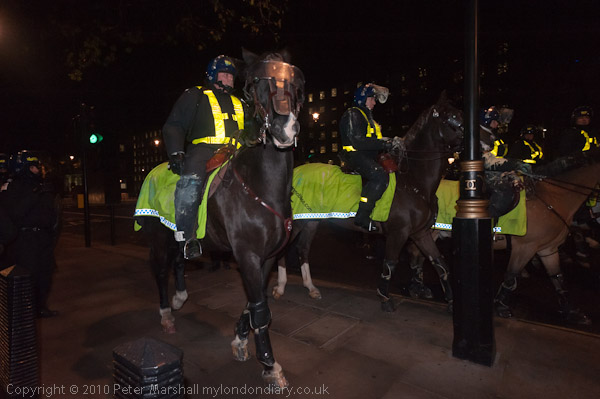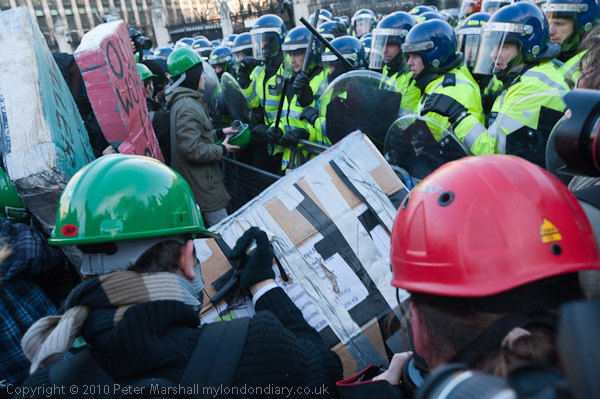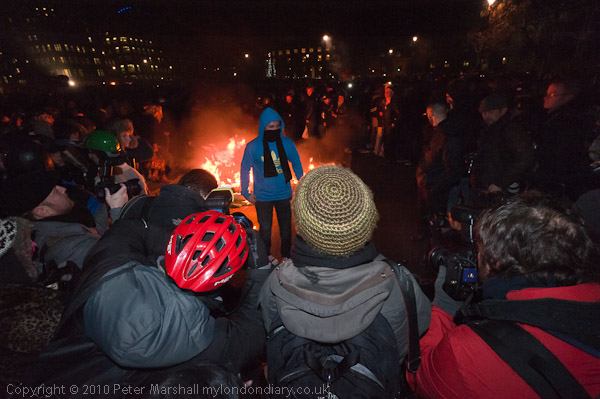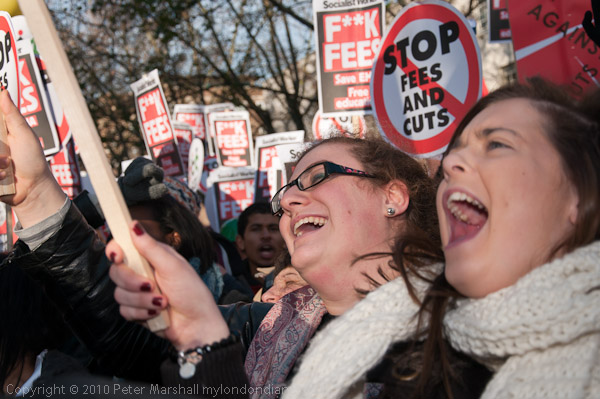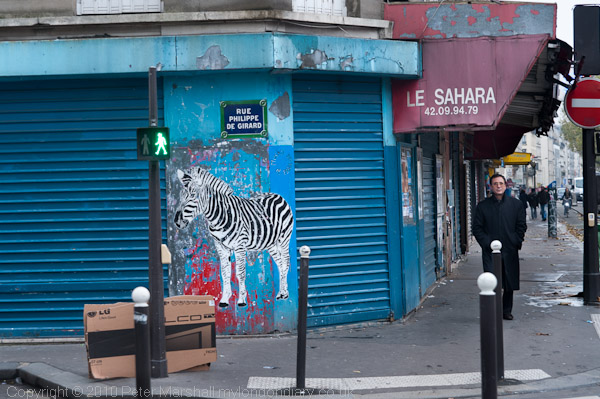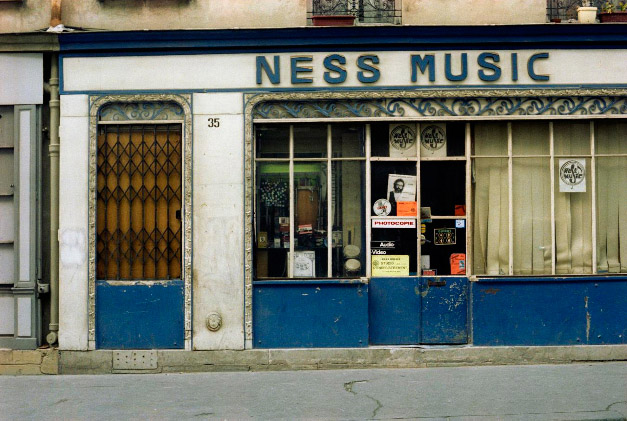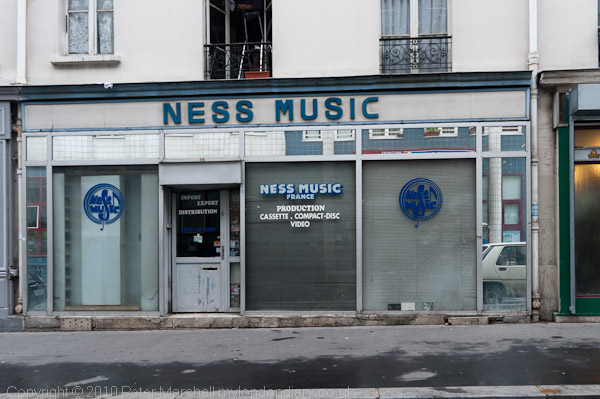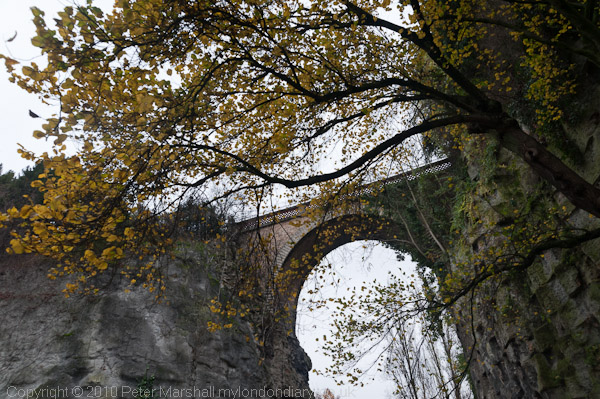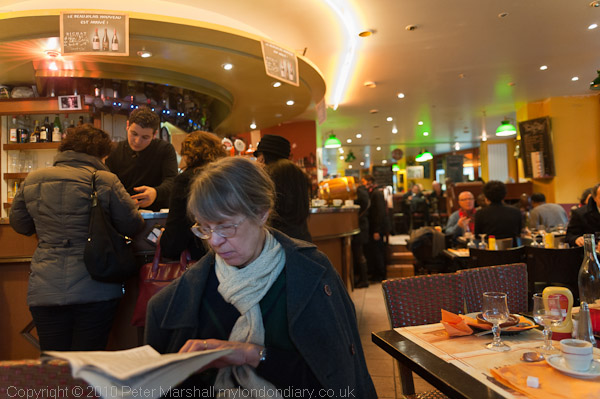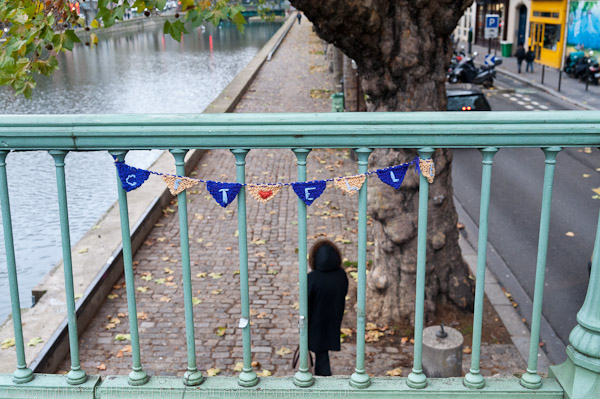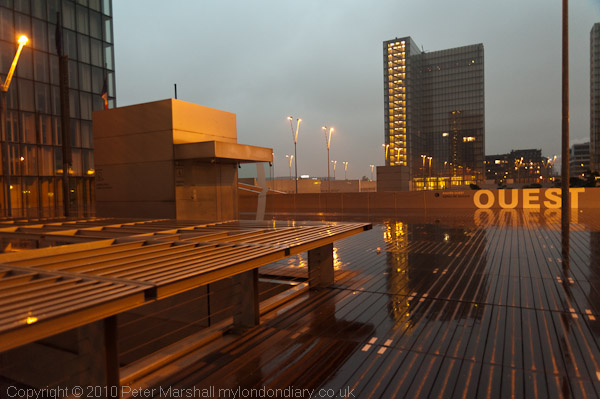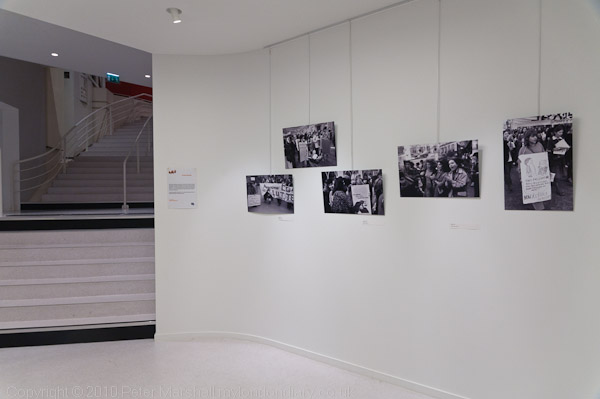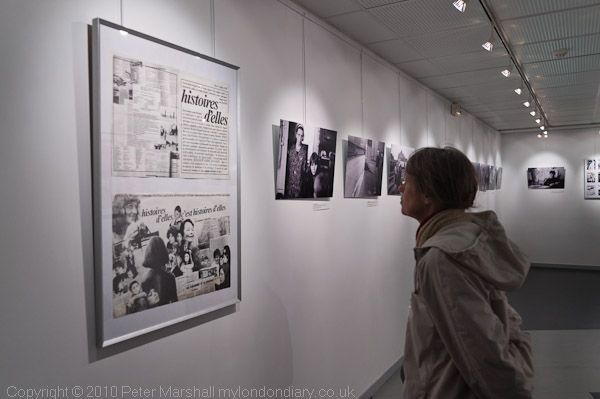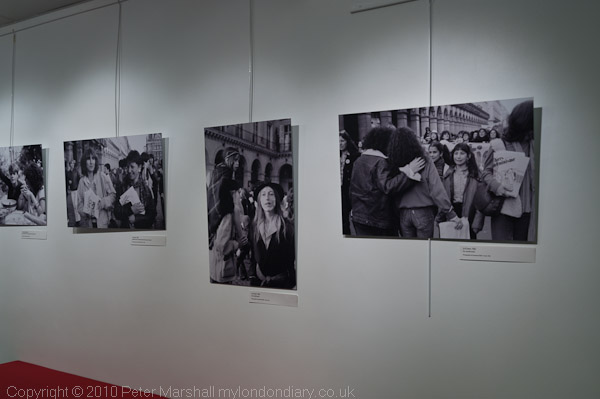Saturday December 18th is ‘Pay Day‘, UK Uncut‘s second day of demonstrations around the country against tax dodgers, once again targeting Vodafone and Sir Philip Green, on one of the busiest shopping days, just a week before Christmas.
I’m at a meeting and then travelling across the country (snow allowing) and so won’t be photographing this event, but I have just put more pictures from their first day of action in Oxford St on December 4 on to My London Diary.
We had snow then too, and my train took an extra 25 minutes to get in to London and although I ran up and down the escalators on the Underground I still was not there in time to get inside Topshop for the start of the protest (though since I was carrying a camera bag the security there would probably have ejected me in any case.)
This was a protest that caught the attention of the media, and as well as a crowd of press and freelance photographers, there were also many others there with cameras, crowding around the door and the line of security men and police across it.
I’m not particularly tall either, which doesn’t help when you are in a crowd. The protesters were at the back of the store and I couldn’t get a good view of them. There were a lot of shoppers still inside the store at that point taking pictures of what was happening on their phones and compact cameras, and they were better placed than us.
Later it was still a huge crush whenever there was anything happening in the doorway of the shop or even on the pavement outside. But I did get some pictures that I rather liked, and in particular a whole series of one young woman.
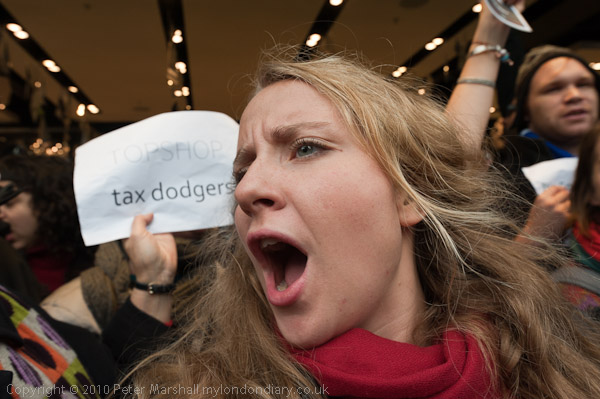
My difficulty was that I was really too close, having to work with a wide-angle lens and sometimes getting a little more distortion than I wanted. I couldn’t move to either left or right, being pushed from both sides and from behind, as well as ignoring a policewoman who kept telling me to move back.
Later I photographed the same woman protesting outside BHS, and there both protesters and photographers had a little more room.
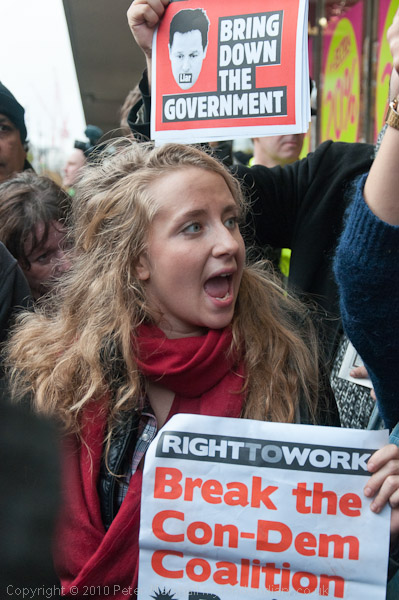
In some ways it’s a better picture, with some well-placed text on the two placards, but I find the upper one stronger, partly because of the closer approach (and the distortion that comes with that), partly because of the tauter expression which gives it a greater urgency. But it also works better because of the radiating light fittings above the head, and, perhaps most importantly because the text in the image is more importantly placed and also ‘TOPSHOP tax dodgers’ is rather more central to the protest than the more political slogans of the lower image.
Having arrived late and perhaps missed what might have been the most interesting part of the protest I was pleased to find that at least one of my images did appear in the press.
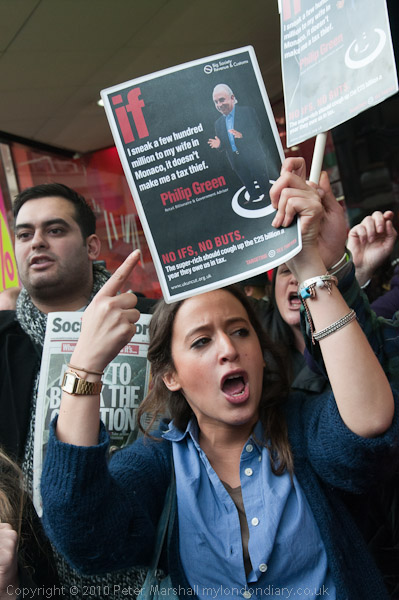
It was that pointing finger, accusing Sir Philip that made this the picture to be used, and this was the ninth of a dozen frames I took of her pointing, some including more people. Three frames used a similar framing to this image, but in the other two the finger stands out less as rather than being over the red background, it is over the face of the man behind.
For this I was using the D300 with the 28-105 Nikon at 57mm focal length. The top image was on the D700, 16-35mm Nikon at 26mm, and the middle picture the D300 at 67mm. All at ISO 800 to give me decently fast shutter speeds. It was an overcast day but but not too gloomy and I didn’t use flash in any of the pictures, though I have opened up the shadows and brought down some of the highlights in the processing in Lightroom.
